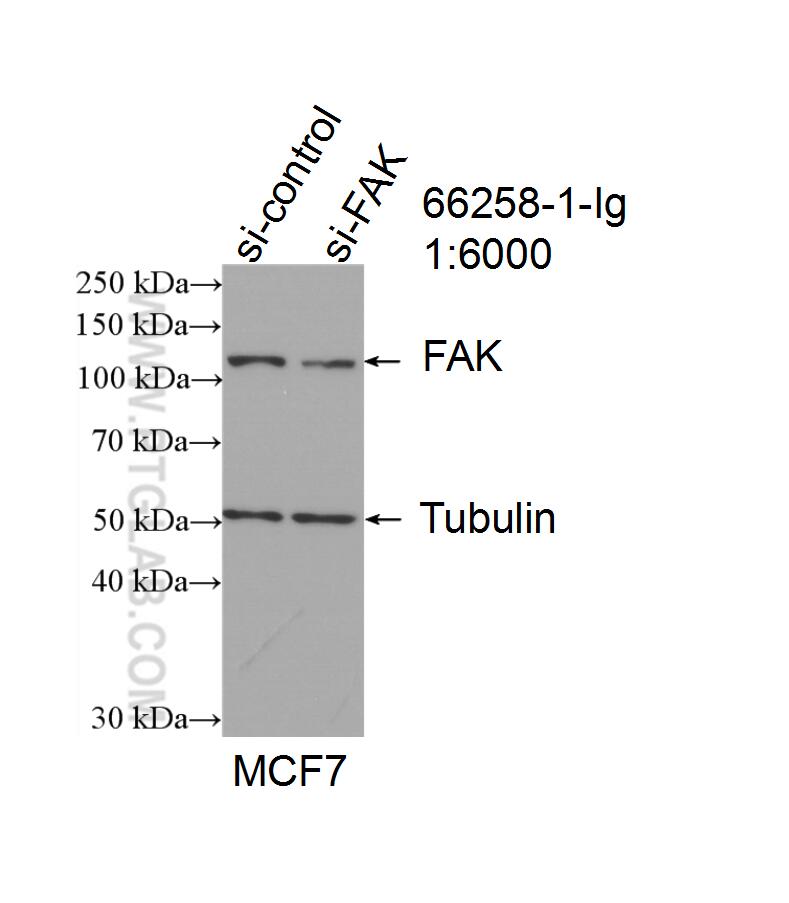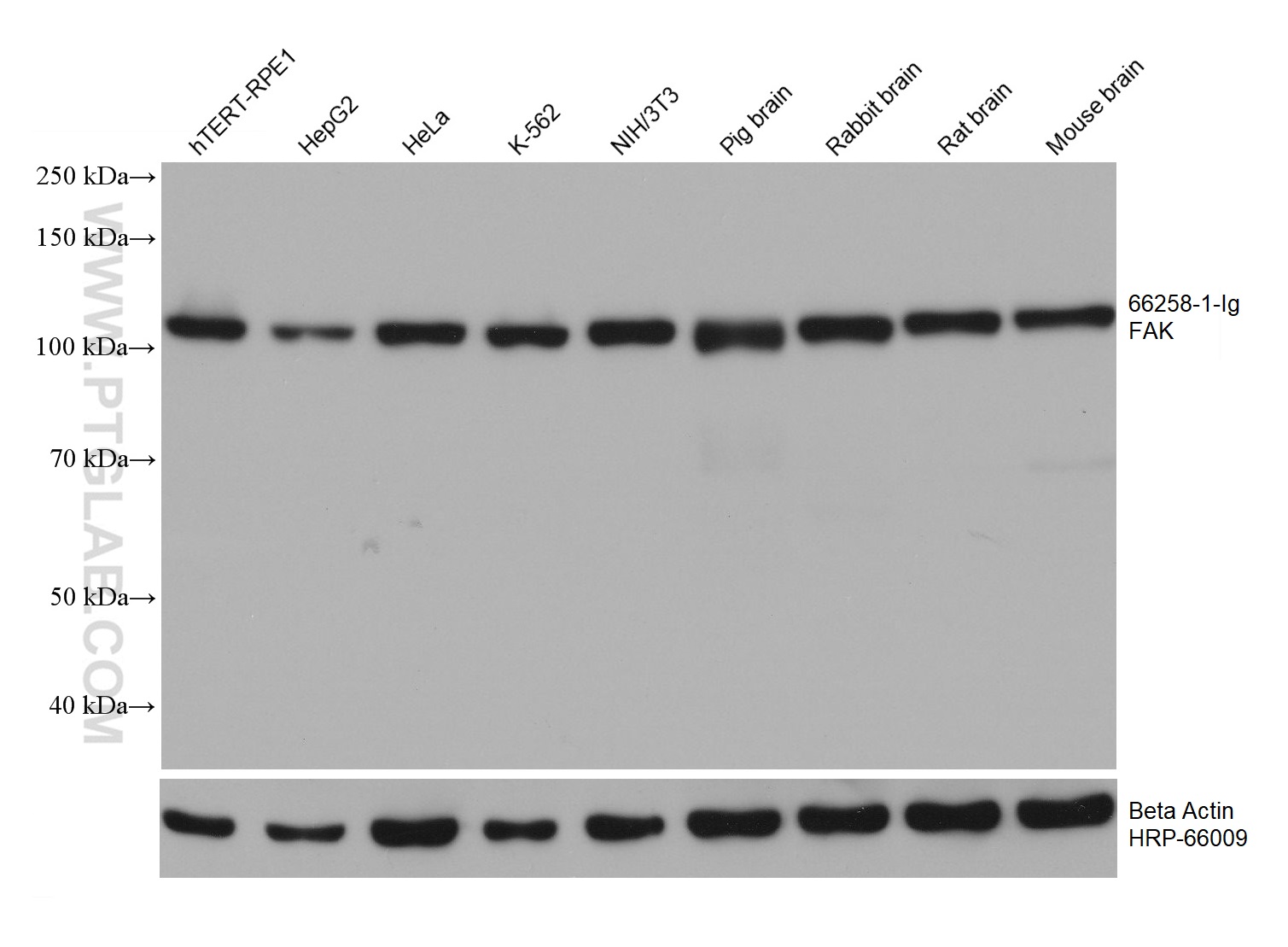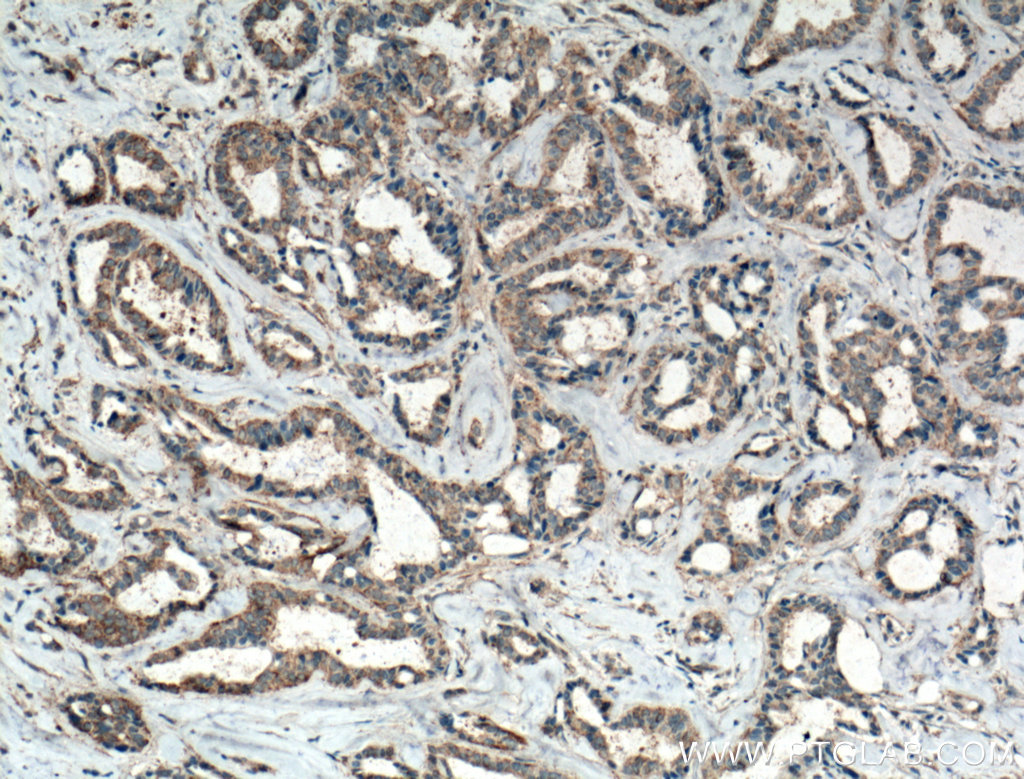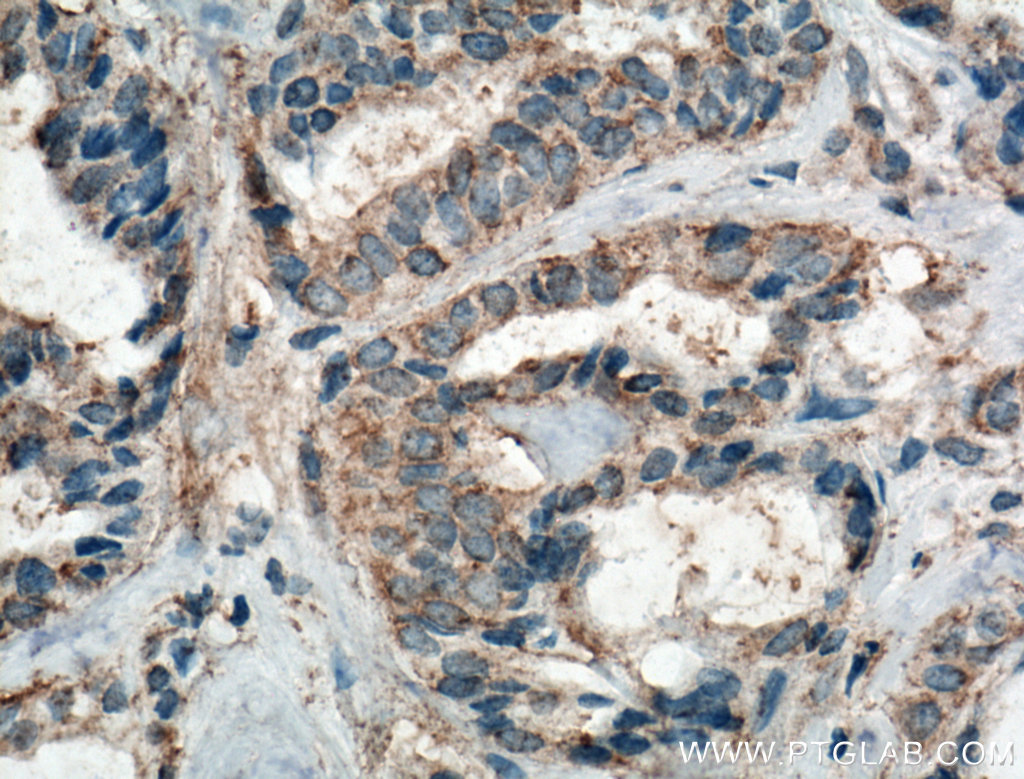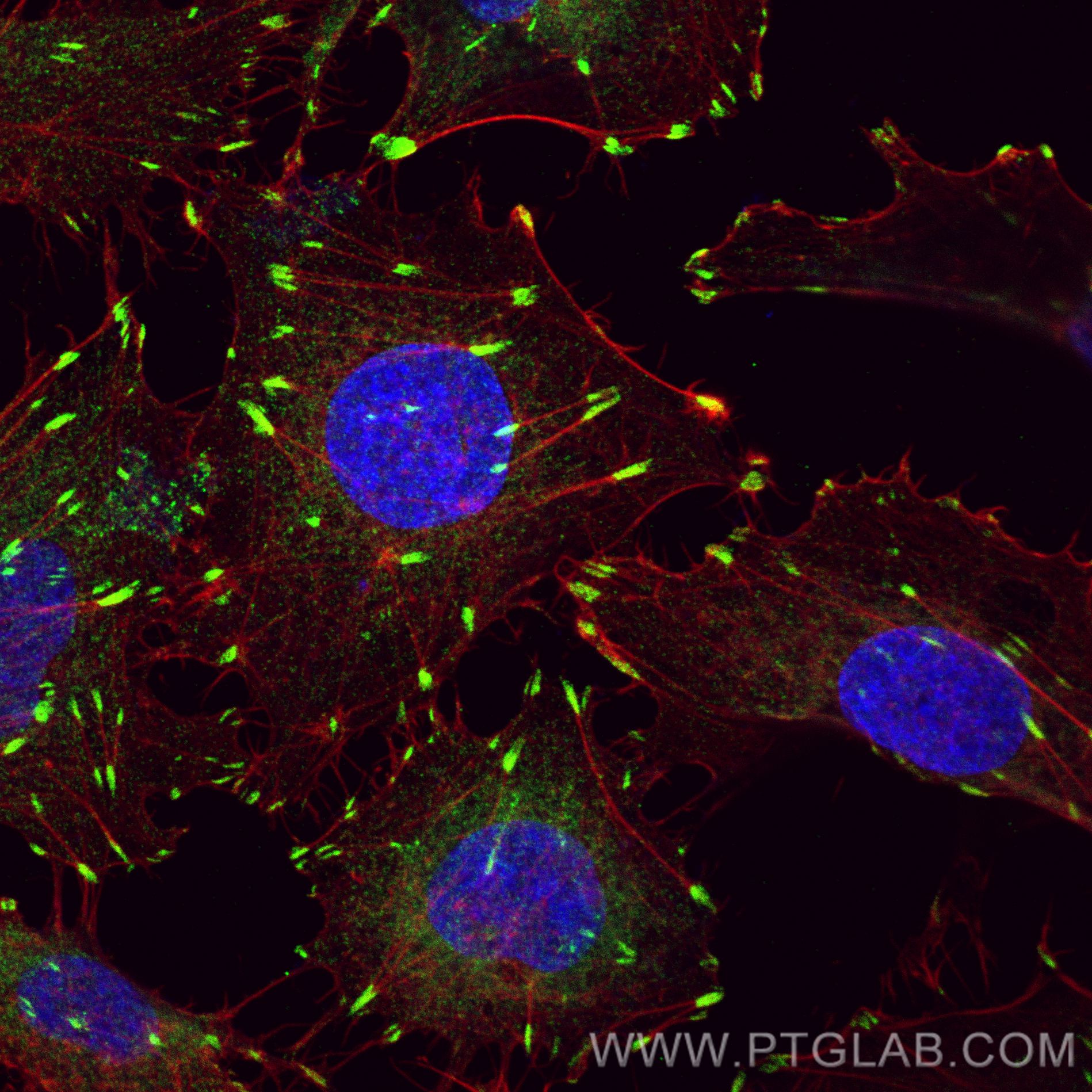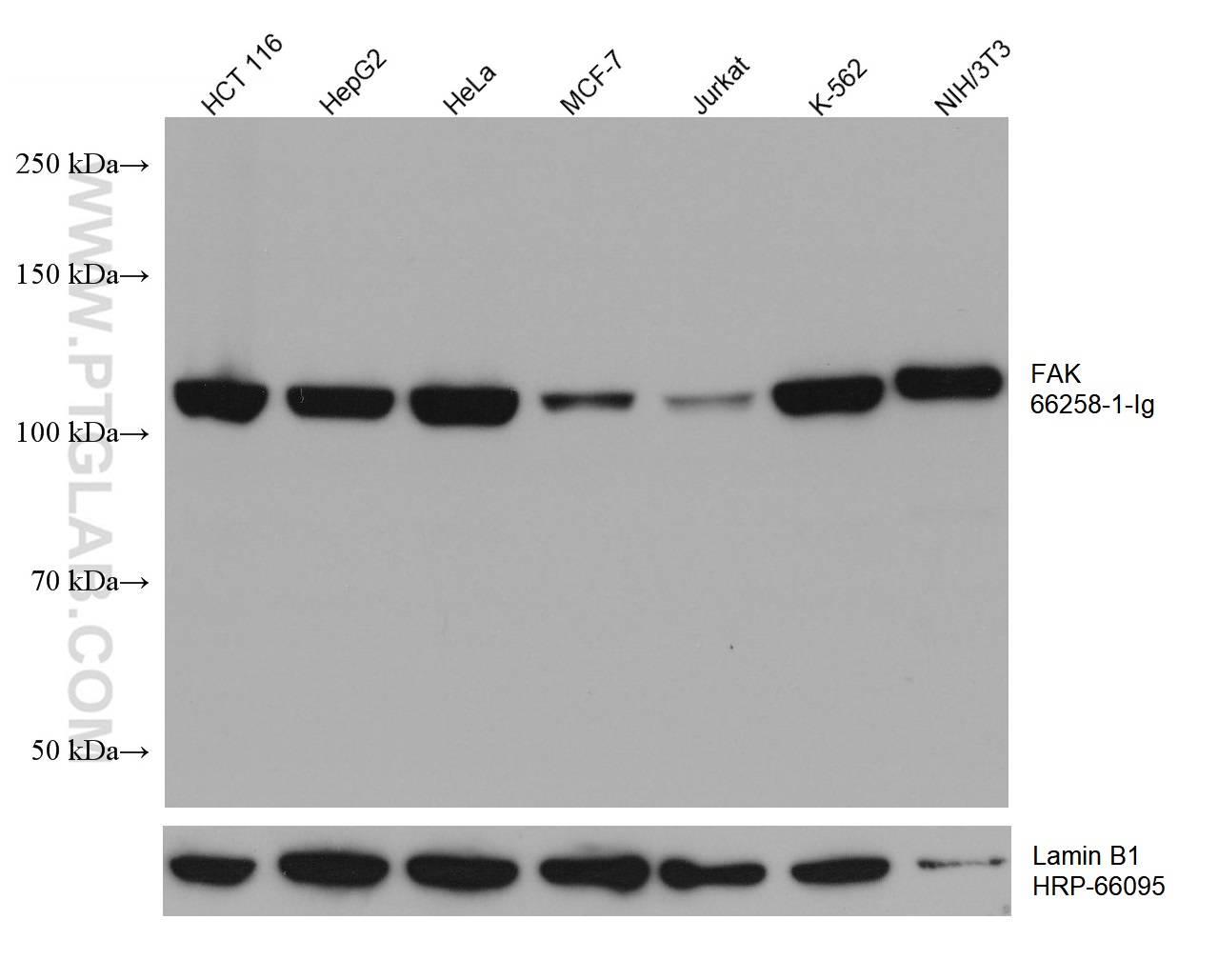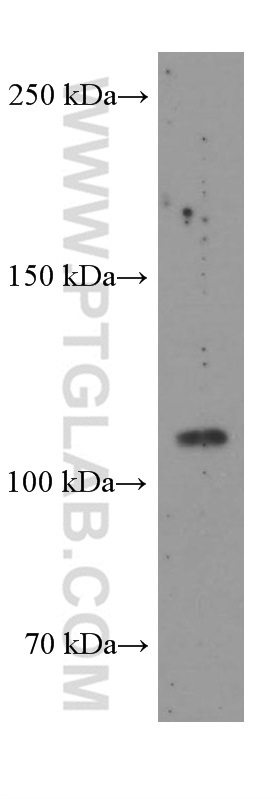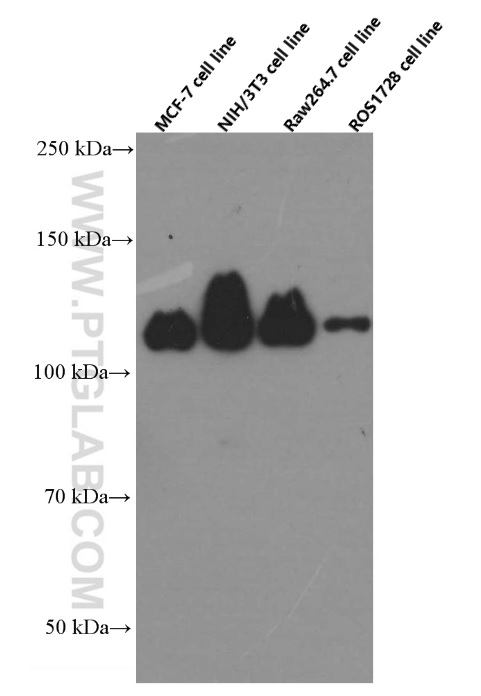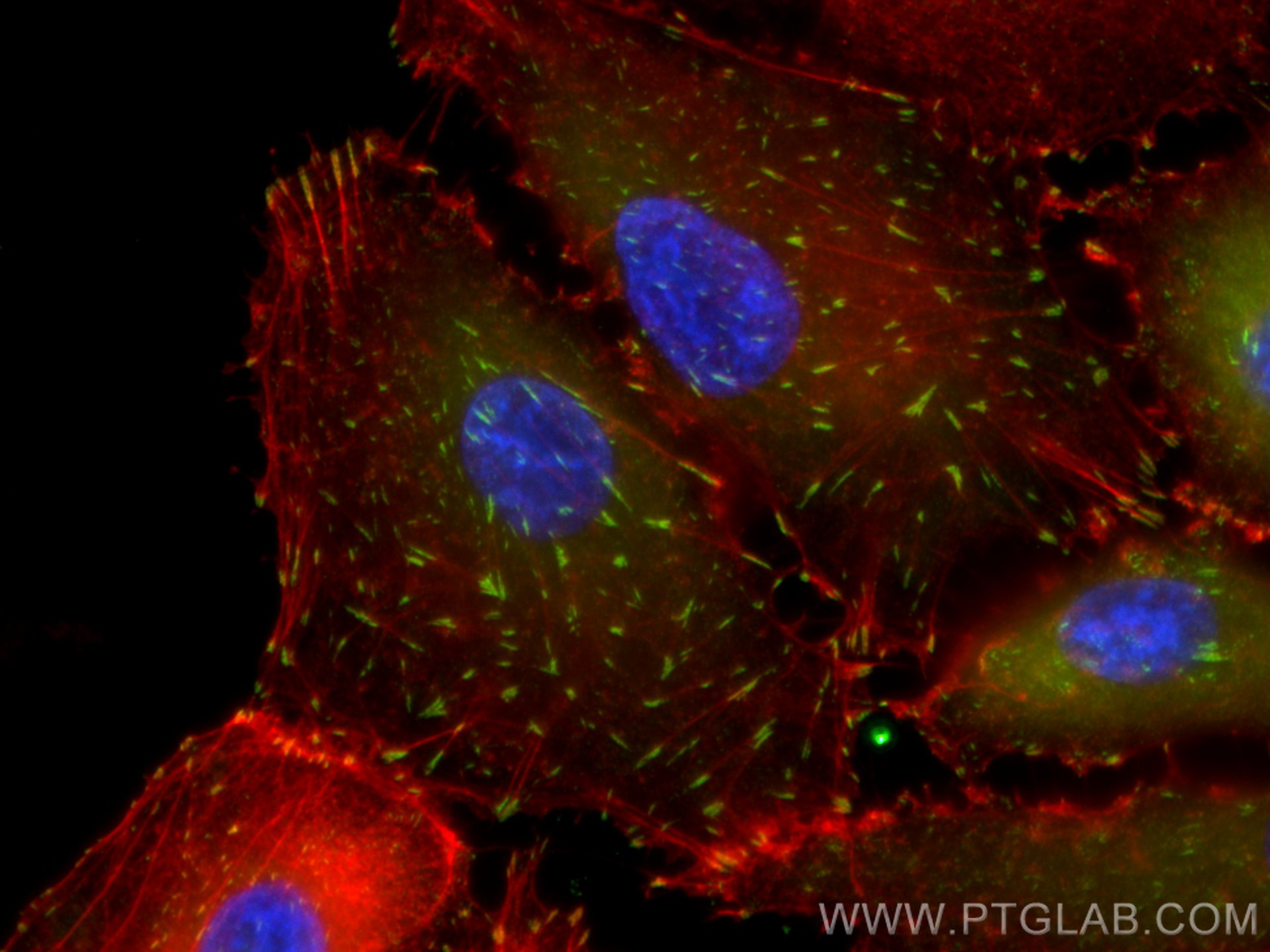验证数据展示
产品信息
66258-1-PBS targets FAK in WB, IHC, IF/ICC, Indirect ELISA applications and shows reactivity with human, mouse, rat samples.
| 经测试应用 | WB, IHC, IF/ICC, Indirect ELISA Application Description |
| 经测试反应性 | human, mouse, rat |
| 免疫原 |
CatNo: Ag17966 Product name: Recombinant human FAK protein Source: e coli.-derived, PET28a Tag: 6*His Domain: 381-678 aa of BC028733 Sequence: ITAMAGSIYPGQASLLDQTDSWNHRPQEIAMWQPNVEDSTVLDLRGIGQVLPTHLMEERLIRQQQEMEEDQRWLEKEERFLKPDVRLSRGSIDREDGSLQGPIGNQHIYQPVGKPDPAAPPKKPPRPGAPGHLGSLASLSSPADSYNEGVKLKPQEISPPPTANLDRSNDKVYENVTGLVKAVIEMSSKIQPAPPEEYVPMVKEVGLALRTLLATVDETIPLLPASTHREIEMAQKLLNSDLGELINKMKLAQQYVMTSLQQEYKKQMLTAAHALAVDAKNLLDVIDQARLKMLGQTR 种属同源性预测 |
| 宿主/亚型 | Mouse / IgG2c |
| 抗体类别 | Monoclonal |
| 产品类型 | Antibody |
| 全称 | PTK2 protein tyrosine kinase 2 |
| 别名 | PTK2, 2C5B9, EC:2.7.10.2, FADK 1, FAK1 |
| 计算分子量 | 1052 aa, 119 kDa |
| 观测分子量 | 110 kDa |
| GenBank蛋白编号 | BC028733 |
| 基因名称 | FAK |
| Gene ID (NCBI) | 5747 |
| RRID | AB_2881646 |
| 偶联类型 | Unconjugated |
| 形式 | Liquid |
| 纯化方式 | Protein A purification |
| UNIPROT ID | Q05397 |
| 储存缓冲液 | PBS only, pH 7.3. |
| 储存条件 | Store at -80°C. The product is shipped with ice packs. Upon receipt, store it immediately at -80°C |
背景介绍
FAK (Focal adhesion kinase 1) is also named as FAK1, FADK, pp125FAK, FAK and belongs to the protein kinase superfamily. It is a critical tyrosine kinase that modulates cell adhesion, migration, proliferation and survival in response to extracellular signals (PMID:19664602). It also acts as a pivotal signal 'integrator', controlling and coordinating cellular responses that include cell migration, survival, proliferation and, epithelial tissue repair after DNA damage (PMID:20966971). This protein has some isoforms produced by alternative promoter usage and alternative splicing, and the range of the molecular weights are 100-120kD and 40-60kD.

